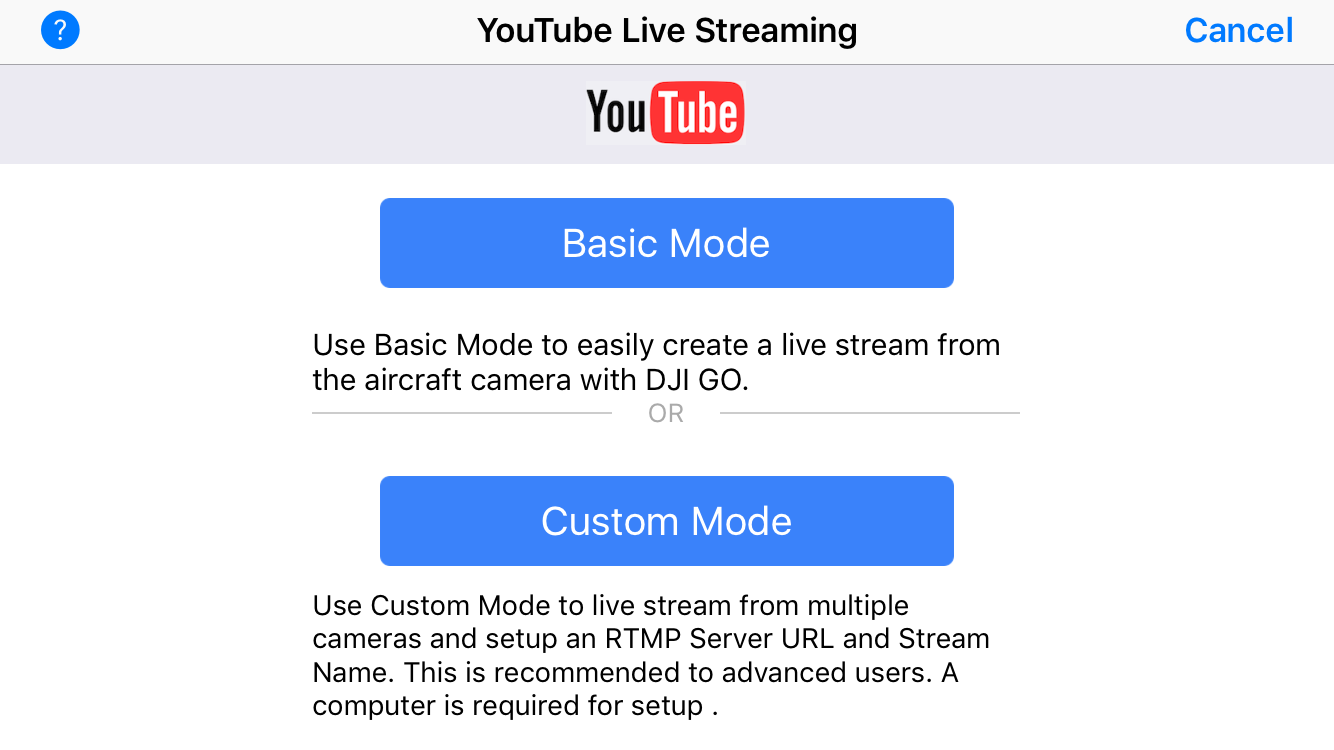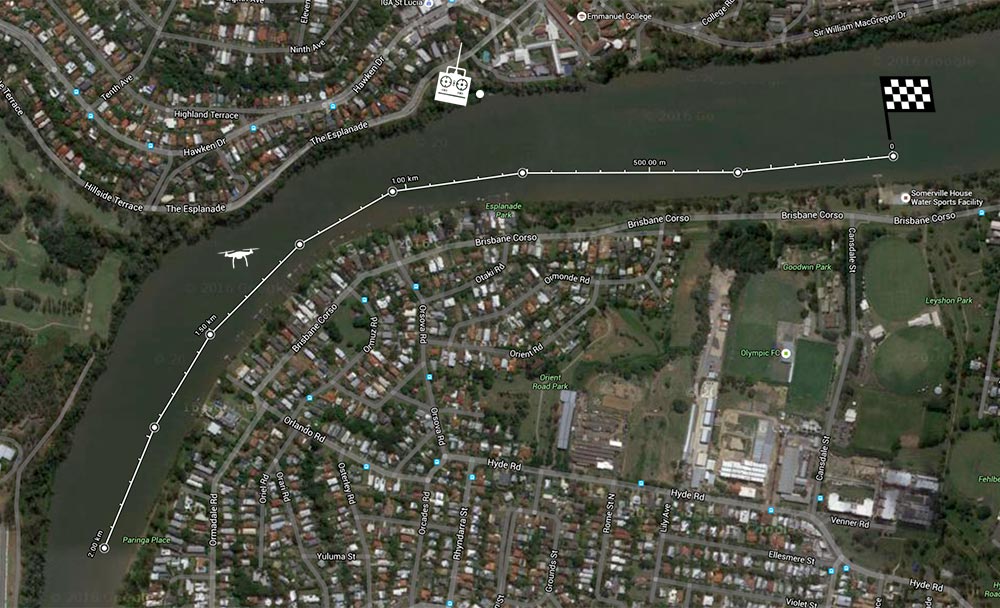Through Dispatch Media I was tasked with livestreaming a birds-eye view of the UQ college rowing regatta.
The neat thing abut this project is that not long ago it would have been so prohibitively expensive that it wouldn’t have even been considered. However with the proliferation of consumer drone technology it was achieved at an incredibly accessible price point, dramatically improving the caliber of the event.
We started with a problem: watching a two kilometre rowing event from the clubhouse at the finishing line is a terrible user experience. You only see the last 200 metres, and have to rely on the commentator (who can barely see anything himself through his binoculars) for the majority of the event. Relocating the crowd doesn’t help as the river bends sharply, so no one location has an acceptable vantage point.
We considered a range of solutions, such as livestreams from GoPros inside the boats and camera operators in tinnies following behind. In the end though none of these gave us the view we wanted, so we went with the much cooler, but also much less robust option which was livestreaming from above.

The DJI Phantom 3 Professional was chosen for it’s built-in ability to stream video to YouTube from the iOS pilot app. It broadcasts the ‘720p’ signal that you see on the phone from the lightbridge connection. When we first tested it out, we were very disappointed: the app was buggy, the livestream was flaky, the signal from the drone to the remote control seemed to get much worse once you started broadcasting. We almost threw in the towel. However, after many attempts we managed to get it working just well enough.

The main things we found:
- The range of the aircraft is much lower when livestreaming. Normally you can go to 2km without too much trouble, however the signal started dropping out around a kilometre as soon as the broadcast started. When the signal starts getting temperamental the livestream generally crashes. Not ideal when you’re tracking a 2km race!
- Don’t leave the app. Technically the app can keep streaming in the background, but even a notification pop-up can be enough to upset things.
- Don’t use wifi. Counter-intuitively, we had much better reliability with LTE than a fast, reliable wifi connection. Maybe we were doing something wrong, but we tried a few.
- There’s a 15-25 second delay. Nothing you can do about this.
- Shoot in a vivid picture profile. Normally we shoot log of course, but this looks terrible on the broadcast.
This had a few major implications for us. With a range of approximately 1km and a 2km race, we had to position ourselves right in the middle of the race in order to cover the whole distance. This makes communication with the rest of the staff much more difficult. It also means no wifi, although as per point 3 above, not important.
We mapped and tested a few different spots, comparing signal interference and visibility. In the end this is where we chose. It actually had really great signal, and we got about 1500m up and down the river.

In the end the event went fantastically. Despite our troubles, prior planning meant the event went off very smoothly, in fact perhaps the most reliable livestream I’ve been involved with so far! Pretty incredible considering there are twice as many places for things to go wrong.
Below are two more videos from the event:
- The full quality recording of the event (4k internal)
2. The actual livestream footage (720p stream)